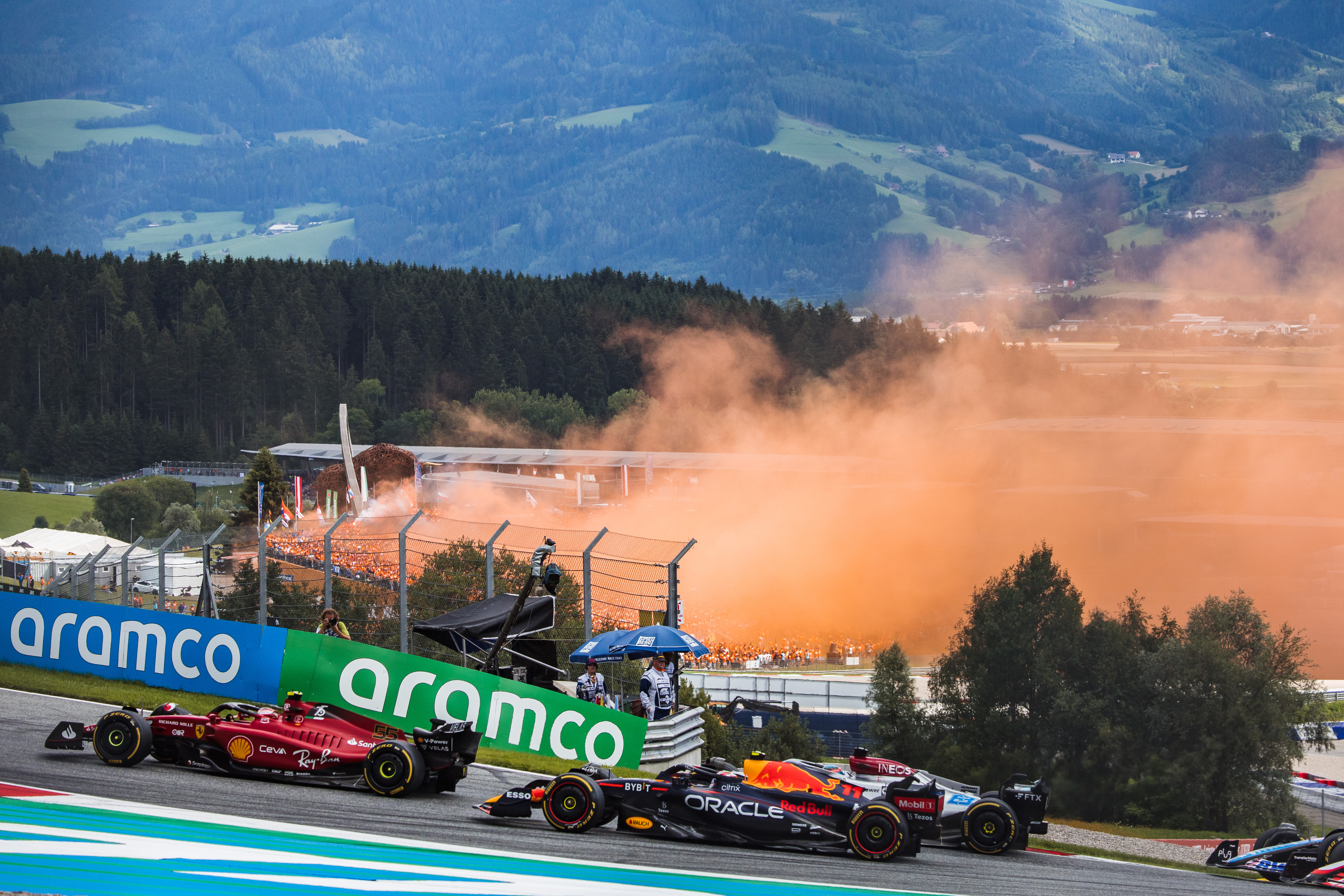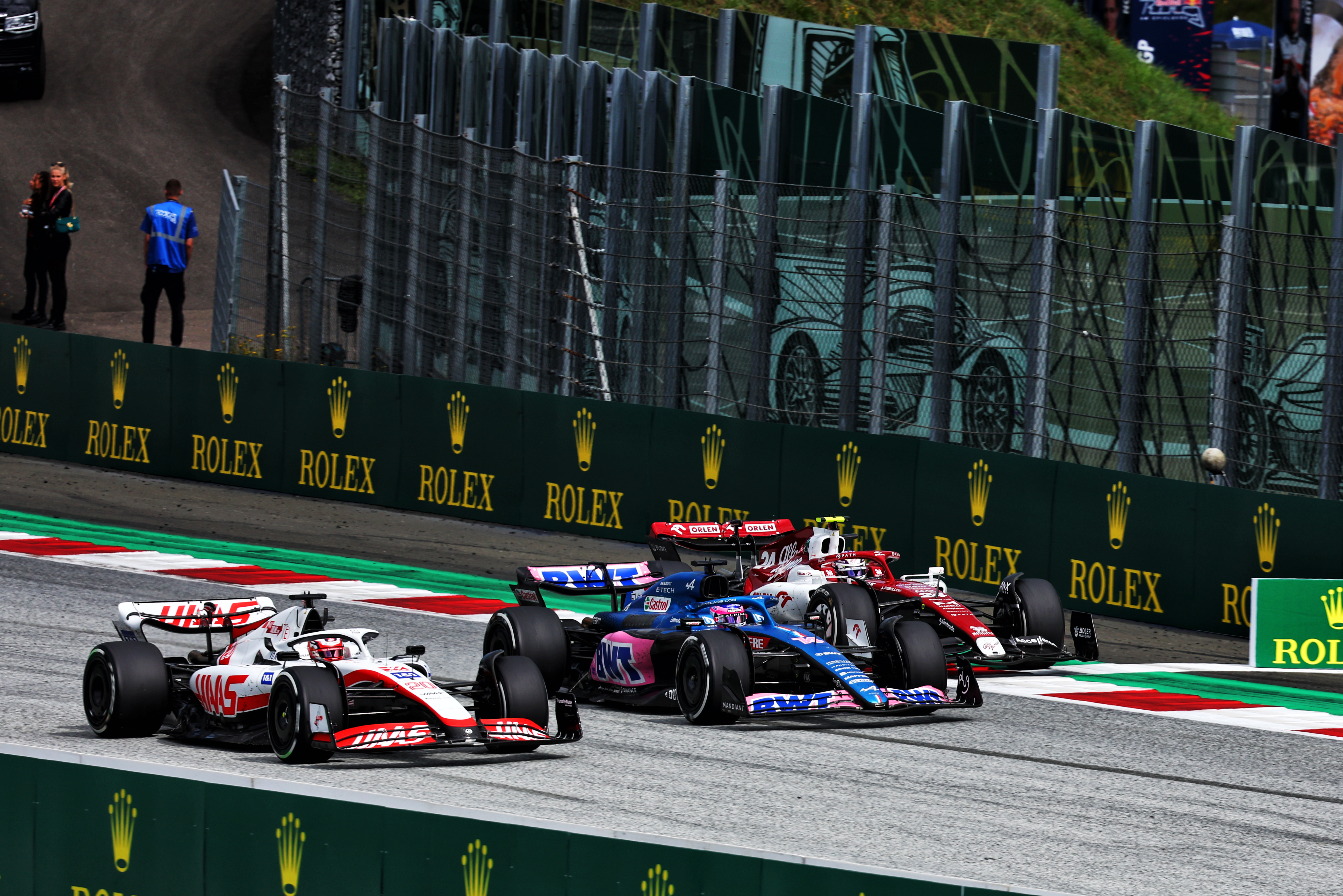Up Next

Formula 1 drivers demand the consistency provided by clearcut, universally applicable rules and regulations ensuring they know exactly what is or isn’t allowed in any given on-track situation. It’s an understandable impulse, but they should be careful what they wish for.
Consistency is logical and reasonable to request and impossible to argue against. But it’s not just idealistic, it’s unrealistic.
George Russell, in criticising what he called a harsh five-second penalty for causing a collision with Sergio Perez, hit the nail on the head when he said “every single incident is different, the dynamics of every single incident is different”.
It was immediately obvious the Perez collision should lead to a penalty under the current guidance. Issued at the start of the year, this indicated that a driver attempting to pass on the outside must have a “significant portion” of their car alongside.
The stewards then consider if the overtaking is “ahead of the other car from the apex of the corner”, which means it has earned the right to space to make the corner while staying “within the limits of the track”.
Russell might argue that he was already committed to the corner and physics meant he was always going to be carried wide. He could also contend that Perez could have been that little bit wider, raising the question of just how much space is enough.
What’s more, conventional racing wisdom would argue the driver on the outside is taking a risk by attempting the move and paid the price for the gamble not paying off. You could also invoke the old ‘show them the grass’ conventional wisdom.

A traditional racing argument would be that it was a racing incident and that was the instinctive response. But with hard and fast rules, none of this matters. Perez was within the guidelines, knew he was and was therefore entitled to get around the corner with Russell at fault for his failure to do so.
Overtaking in a corner is inherently complex. The track itself is immutable, its boundaries finite and unchanged. But the way two – sometimes more – cars negotiate it in battle has endless varieties. Like any complex system, it is not easy to boil it down to a one-size-fits-all way to judge all incidents.
The position Russell is arguing from is the natural one for any racing driver. It’s effectively a heuristic methodology, based on vast experience and knowledge that means any driver will have a clear idea of what is or is not acceptable. Of course, the perception of this will vary a little from one driver to another – and no driver involved in an incident can over an unbiased analysis – but it will be simultaneously understood and impossible to encapsulate in a written rule.
As soon as you create black-and-white wording, you create a hard line. Russell was on the wrong side of it. If you call for consistency and clear rules, that’s the bargain you strike. Calling for guidelines to change endlessly is the definition of inconsistency.
When you have a line, as has been demonstrated with finickity offside calls using VAR in football, you have a point where two near-as-makes-no-difference identical incidents will fall either side of that line. One will fall one side, one the other – how can that be consistent?

The regulations and guidelines for overtaking are a two-dimensional description of a three-dimensional situation. Effectively, it’s a traffic light system – tick all the boxes and away you go, fail to do so and you have to cede. But the reality is never that simple.
At a time when relations between the drivers and the FIA are tense, to say the least, both sides need to cede ground. The FIA must ensure it has a constructive and productive dialogue with the drivers, something that many drivers don’t believe is happening. The drivers need to accept that if they want clear, written guidelines, it will inevitably not always lead to the outcome they expect.
There must either be clear, written rules that will, at times, not adequately describe situations that drivers have an intuitive understanding of on track, or it needs to be left to stewards to exercise their best judgement without being constrained by rigid written guidelines. Perhaps the latter would be more palatable were the FIA to join the 21st century and appoint full-time professional stewards?
Referees and competitors in any sport are natural enemies. There will always be a push and pull in F1, with drivers keen to get away with whatever they can and stewards trying to keep them on the straight and narrow. But both sides must accept when it comes to racing, there is a muddy middle where things are, inconveniently, not straightforward.
And if they want clear guidelines, then it’s necessary to accept that you might occasionally get a penalty for something that your experience tells you, you shouldn’t.






